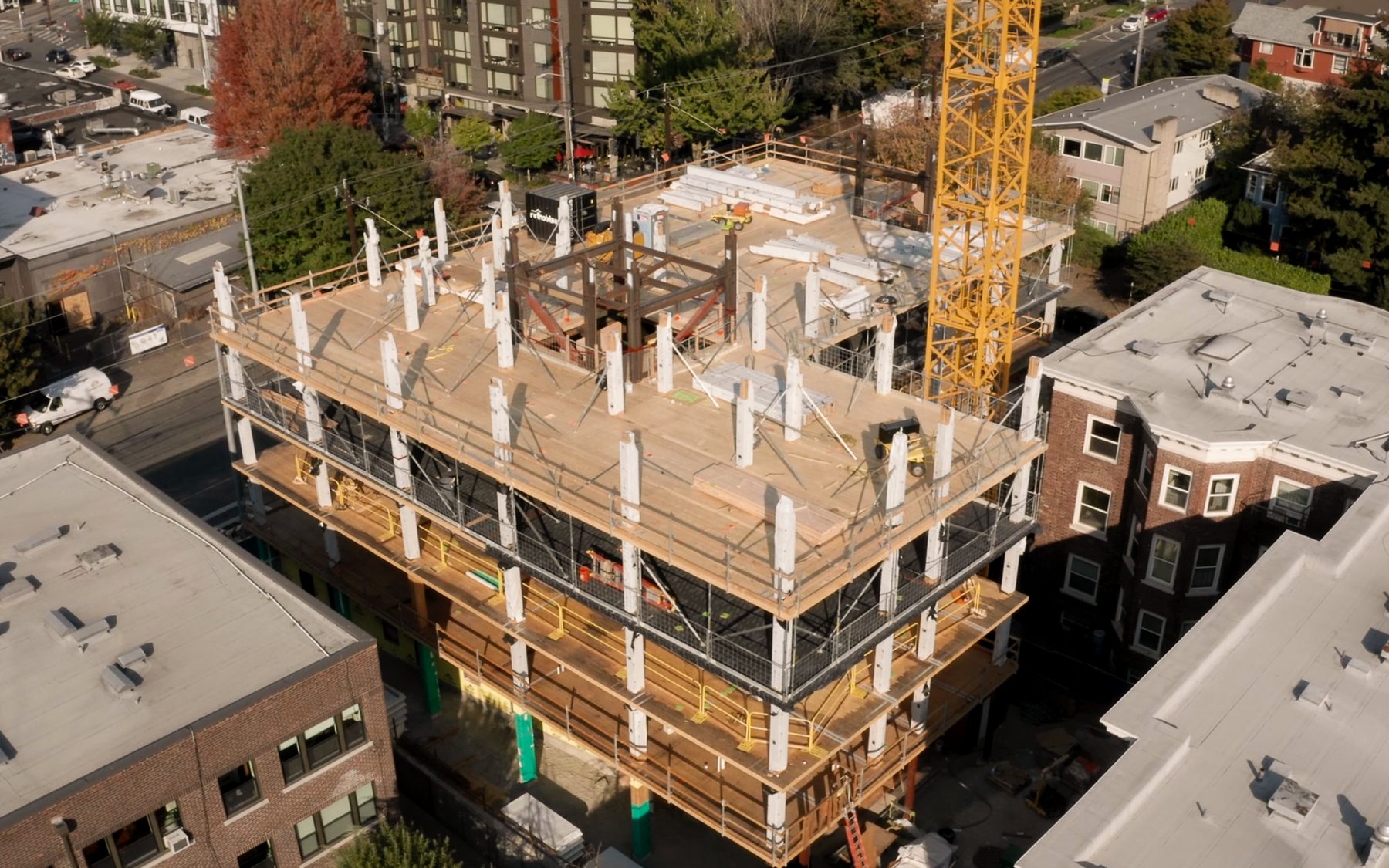CREATING SCALABLE AFFORDABLE HOUSING OPPORTUNITIES
Interim vs. Permanent Affordable Housing
There are two effective types of affordable housing: interim transitional housing and permanent supportive housing. Interim transitional housing facilities are often built to meet a temporary yet immediate need and can be demobilized, and potentially preserved, for use on different sites. These rapid, cost-effective, and scalable solutions allow unhoused individuals to transition to stable living environments, helping to get them back on their feet faster, making it a popular solution to address the growing homelessness crisis nationwide. Permanent supportive housing includes long-term, traditionally built structures, typically apartments or condos, for individuals and families at varying income levels.
Swinerton understands the complexities of affordable housing construction and has the ability to leverage construction approaches that are cost-effective and efficient, including mass timber, modular construction, concrete, and steel.
Mass Timber
Mass timber is a cutting-edge construction material and an ideal solution for affordable housing, aligning with Swinerton’s drive toward creating more sustainable environments. Mass timber construction is renowned for its minimal carbon footprint, because wood is a renewable resource that naturally sequesters carbon. It also promotes offsite prefabrication, allowing for efficient assembly onsite, resulting in quicker and more predictable project completion. With its potential for faster construction timelines, it can help mitigate quickly-rising housing costs, a prevalent issue year after year across the country.
Mass timber is not only sustainable, but also aesthetically appealing. The biophilic element of wood creates a connection with nature, making living spaces feel larger and enhancing the overall well-being of residents.
“Mass timber fosters a concept of wellness in affordable housing, which is often not top of mind in many affordable developments. It really is a holistic and viable solution for creating sustainable, economical, and beautiful homes for communities in need,” says Alison Satt, Vice President and Division Manager of Swinerton in Austin.
There are challenges to consider when building affordable housing with mass timber, such as the comfort level of developers with this relatively new technology. Additionally, the type of affordable housing project matters, with permanent supportive housing being a more suitable fit for mass timber due to its long-term durability. In terms of site selection, uniform sites with grid spacing and fewer jogs or turns are ideal for maximizing the benefits and minimizing costs associated with mass timber construction. Collaborating with clients during site selection can optimize the approach and make the process more efficient and cost-effective. Timberlab, an affiliated company and project partner of Swinerton, offers full-service mass timber supply and installation, partnering with Swinerton from day one and working closely together in the preconstruction and construction phases to streamline the delivery process. Ultimately, using mass timber for affordable housing presents a promising solution, but careful consideration of the project type, site selection, and client comfort level is crucial for success.
Modular Construction
Modular construction is another highly viable approach and provides a competitive alternative to wood frame construction, making it suitable for markets where wood frame is not feasible or desirable. Factory-built in a controlled environment, modular components allow faster onsite assembly with great precision. Modular construction is adaptable to different types of sites, including urban infill locations and even undeveloped land. Modular construction can assist with controlling costs and helping move people into a stable housing environment quickly.
Modular construction is well-suited for interim transitional housing because, with adequate upfront site planning, it can adjust to suit the needs of the community and development. This construction methodology can also be implemented in permanent housing, making it a versatile option for addressing diverse housing needs. Despite its advantages, there are challenges to consider, such as investigating the bonding capacity of modular factories. Many modular production factories are fairly new to the market and in an affordable housing project where every dollar counts, research into the financial stability of modular partners is extremely important.
Purchasing modular elements at the quantities needed for a housing project also requires a large deposit early in the construction process; developers need to be aware of this and examine the schedule, trajectory, and financing plan for their project to be prepared for this sizable up-front spend. With proper planning and adherence to best practices, modular construction can be an efficient and cost-effective solution for affordable housing.
Concrete & Steel
While structural steel is commonly used in high-end projects, it is rarely feasible for affordable housing due to its high cost. However, Swinerton’s history of building concrete towers for over 100 years allows the firm to capture cost savings and improve efficiency as consistent crews build higher and denser from floor to floor, often completing a floor every three days. Concrete lends itself to permanent housing facilities by providing opportunities for the development, design, and construction team to meet the end-users’ needs.
“For these more permanent solutions, you really get to interact at the tenant level and listen to what the future homeowners’ goals are. That is very rewarding and will only make projects better for the future,” says Patrick Otellini.
While concrete is often the choice for multi-story buildings, Swinerton acknowledges the changing landscape of sustainability and the need to consider environmental impacts, including carbon emissions. As codes and regulations evolve, there may be a shift towards more sustainable materials, like mass timber.





